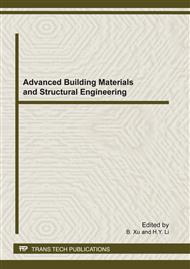p.132
p.138
p.142
p.151
p.155
p.160
p.164
p.169
p.173
State of Charge Estimation for Lithium Batteries in EV
Abstract:
The accurate estimate to remaining power of the lithium battery has a very important significance to continued operation of the electric vehicle. Based on the electrochemical mechanism of lithium batteries during charge and discharge, by using the genetic algorithms to determine the weights of the SVM network, a combination algorithm is applied to estimate state-of-charge and the initial condition of network is optimized and has less error to the network. The simulation results show that the optimization network has higher precision for lithium battery SOC forecast method and can be used to estimate the lithium battery SOC value of the electric vehicle
Info:
Periodical:
Pages:
155-159
Citation:
Online since:
February 2012
Price:
Сopyright:
© 2012 Trans Tech Publications Ltd. All Rights Reserved
Share:
Citation:


